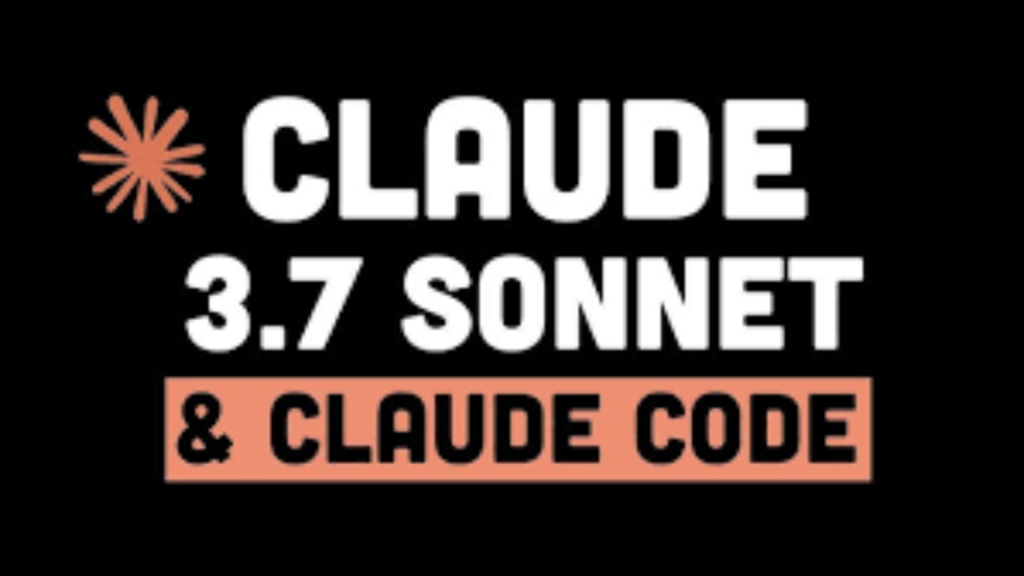Claude 3.7 Sonic: A Game-Changer in AI Thinking and Coding

Introduction
Claude 3.7 Sonic has just been released, and it’s already making waves in the AI community. With a hybrid reasoning model that combines near-instant responses with deep thinking, this latest version from Anthropic is redefining what’s possible in artificial intelligence.
But what exactly makes Claude 3.7 Sonic so powerful? How does it compare to other models like GPT-4, Grok 3, and OpenAI’s latest offerings? And most importantly, how can you leverage its capabilities for coding, problem-solving, and real-world applications?
This blog dives deep into Claude 3.7 Sonic, its key features, benchmarks, use cases, and comparisons with other AI models. If you’re looking to stay ahead in AI development, this is the guide you need!
1. What is Claude 3.7 Sonic?
Claude 3.7 Sonic is the latest version of Anthropic’s AI model, designed for hybrid reasoning. It blends two powerful AI approaches:
- Instant Response Generation – Quickly processes and generates responses like traditional large language models (LLMs).
- Extended Thinking Mode – Uses Chain of Thought (CoT) to analyze, reflect, and refine its answers before responding.
This dual approach allows Claude 3.7 Sonic to provide faster and smarter responses than many other AI models available today.
2. Key Features of Claude 3.7 Sonic
Claude 3.7 Sonic introduces several game-changing features that set it apart:
✔️ Hybrid Reasoning Model – Combines instant response and extended thinking.
✔️ Chain of Thought Processing – Uses an internal scratchpad for complex problem-solving.
✔️ 128K Context Window – Supports long-form conversations and deep analysis.
✔️ Optimized for Coding – Enhances AI-powered programming with the new Claude Code tool.
✔️ Adjustable Thinking Time – Developers can control how long the model processes a task.
✔️ State-of-the-Art Performance – Outperforms previous Claude versions and many competitors.
3. How Does Claude 3.7 Sonic Compare to Other AI Models?
Claude 3.7 Sonic is designed to outperform existing AI models, including:
| Model | Reasoning Ability | Coding Efficiency | Thinking Mode | Context Window |
|---|---|---|---|---|
| Claude 3.7 Sonic | ✅ Best-in-Class | ✅ Advanced AI Coding | ✅ Yes | 🔸 128K tokens |
| Claude 3.5 | Good | Moderate | ❌ No | 🔸 200K tokens |
| Grok 3 | Strong | High | ✅ Yes | 🔸 Unknown |
| GPT-4 Turbo | High | Strong | ✅ Yes | 🔸 128K tokens |
Claude 3.7 Sonic excels in problem-solving, coding, and complex reasoning compared to its predecessors.
4. Performance Benchmarks and Testing
Recent AI benchmarks show that Claude 3.7 Sonic leads the market in several areas:
✅ 20% increase in accuracy over previous Claude versions.
✅ Improved performance in real-world applications like airline and retail APIs.
✅ Excels in complex math and reasoning tasks compared to Grok 3 and OpenAI’s models.
These improvements make it ideal for developers, researchers, and businesses looking for a reliable AI assistant.
5. Real-World Use Cases and Applications
Claude 3.7 Sonic isn’t just for tech enthusiasts—it’s a powerful tool across multiple industries:
🚀 AI Coding – Automates software development, debugging, and optimization.
📚 Education & Research – Assists in solving complex problems, including advanced mathematics.
🤖 AI Agents – Enhances chatbots and virtual assistants with better contextual understanding.
🛒 Retail & eCommerce – Powers AI-driven customer support and recommendation systems.
📊 Finance & Business – Analyzes data, forecasts trends, and improves decision-making.
6. The Power of AI Coding with Claude 3.7 Sonic
One of the standout features of Claude 3.7 Sonic is Claude Code – a command-line AI coding assistant. It enables:
💡 Automated Coding – Generates full codebases in seconds.
🔍 Debugging & Optimization – Fixes errors and improves code structure.
🤖 AI-Powered Game Development – Creates complex AI-controlled game logic.
For instance, a snake game was built in seconds using Claude Code, showcasing its efficiency in AI-driven game design!
7. Strengths and Drawbacks
✅ Strengths:
✔️ Best-in-class hybrid reasoning model.
✔️ Excels in coding, math, and complex problem-solving.
✔️ Faster and more reliable than previous Claude models.
✔️ Fully supports AI-driven application development.
❌ Drawbacks:
🚫 No real-time web browsing (Knowledge cut-off: October 2024).
🚫 Context window is smaller than GPT-4 Turbo.
🚫 Requires a paid plan for Extended Thinking Mode.
8. Future of Claude AI Models
With Claude 3.7 Sonic setting new benchmarks, it’s clear that Claude 4 is in the works. If Claude 3.7 Sonic is this powerful, the next-gen model could revolutionize AI reasoning, coding, and real-world AI deployment.
Expect larger context windows, improved real-time learning, and more advanced AI capabilities in future updates!
9. Frequently Asked Questions (FAQs)
1. What makes Claude 3.7 Sonic unique?
It’s the first hybrid reasoning AI, combining near-instant responses with deep, structured thinking.
2. Can Claude 3.7 Sonic browse the web?
No, it currently has a knowledge cut-off of October 2024 and does not support real-time web access.
3. Is Claude 3.7 Sonic better than GPT-4?
In some areas like AI coding and reasoning, yes! However, GPT-4 Turbo has a larger context window and better integration with OpenAI tools.
4. Can I use Claude 3.7 Sonic for game development?
Absolutely! It can generate game logic, control AI-driven characters, and automate game mechanics.
5. What’s the maximum context length for Claude 3.7 Sonic?
It supports 128K tokens, which is smaller than GPT-4 Turbo’s 200K tokens.
6. Does Claude 3.7 Sonic require a paid subscription?
You can use it for free, but Extended Thinking Mode requires a paid plan.